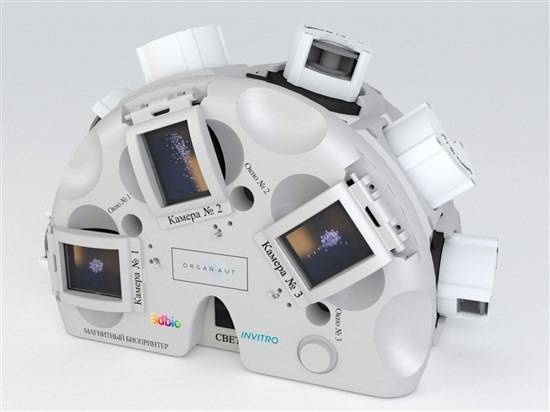Credit: 3dprint.com
Bioprinting in space has been a concept we’ve heard about recently, but as is often the case with 3D printing technology, there was only a very short build-up before it actually happened! But why, you may ask yourself, do we need to bioprint in space? Can’t we perform such complex tasks down here on terra firma? The answer is that of course researchers can—and they do—but studies regarding bioprinting in space have shown that it may be more effective in a microgravity atmosphere. At the same time extends decades long expeditions to other planets will require bioprinting on board to heal sick astronauts.
The International Space Station would be the most obvious place for such exercises to take place, and just last month, Russian cosmonaut Oleg Kononenko represented his country in being the first to bioprint while in space. Using a 3D printer which has been created for the space environment, Kononenko was able to produce both human cartilage tissue, along with a rodent thyroid gland. Both 3D Bioprinting Solutions and Roscosmos created the hardware responsible for making space history, in the form of the Organaut 3D bioprinter. US researchers are still on track for their own space bioprinting endeavors, slated for 2019.
Bioprinting has become a central focus within the medical arena as 3D printing began to hit the mainstream, demonstrating the potential for infinite, innovative opportunities. And the environment is key when it comes to the development of fragile cells which are often not easily sustained, even in the best of research labs. The Organaut bioprints by extruding materials from a syringe, allowing cells to grow into a form which may not be as similar to their normal state as researchers always wish; however, this can be more possible thanks to microgravity. The printer was finally delivered to the ISS following a failed mission last October aboard the Soyuz MS-10 spacecraft.
Researchers are extremely curious about how microgravity benefits bioprinting and more successful cell and tissue growth, along with recent interest in using such technology in space to examine other medical issues and questions—like those regarding radiation and the human body.
“We will look at how the constructs came together, and how they behaved,” said Usef Hesuani, head of laboratory projects and a managing partner of 3D Bioprinting Solutions.
Bioprinting continues to progress thanks to scientists around the world as tissue is created to further medical studies. The larger picture though includes being able to fabricate human organs in the lab, eventually. Such innovation could have enormous impacts on very ill patients who would no longer be at the mercy of organ donor waiting lists. Along with that, 3D printed organs offer the possibility of patient-specific care that could mean an end to the worry about infection, rejection, and so many of the intense complications that make healing difficult for individuals who have received transplants.
3D BioPrinting Solutions is owned by INVITRO, boasting 8 labs and 1,000 offices throughout Europe, with a base in Skokovo. The company is already renowned for their work in bioprinting, due to the fabrication of a mouse thyroid gland in 2015. This work propelled them further to their work at the ISS, essentially doing work they were already quite familiar with.
“We have companies that are making satellite platforms…it is possible to conduct a similar experiment amid microgravity on small spacecraft [like satellites]…smaller and cheaper,” said Ivan Kosenkov, 3D Bioprinting Solutions’ project manager.


